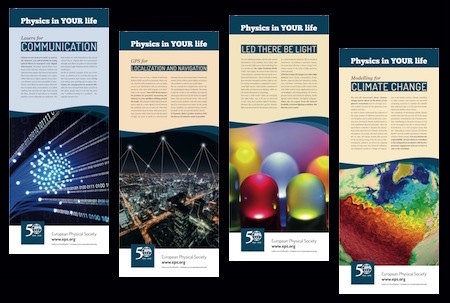Public investments in large research infrastructures and Big Science projects play an important role for economic development. This page is a short overview showcasing their financial impact beyond their core scientific mission.
-
Europe
-
Physics and the economy. In 2018, the EPS commissioned an independent economic analysis from the Centre for Economics and Business Research (Cebr) on the importance of physics to the economies of Europe. The report, using statistics available in the public domain through Eurostat, covers 31 European countries – the EU28 countries, plus Iceland, Norway, and Switzerland. Under examination is the 6-year period 2011-2016, 2016 being the most recent year for which official data are simultaneously available for all these countries. The analysis has been prepared by the Centre for Economics and Business Research (Cebr) to provide the European Physical Society with an assessment of the importance of physics to the economies of Europe. The report examines the economic contributions of physics using many different measures of economic growth and prosperity, and is based entirely on data that is in the public domain, primarily through Eurostat, the European Union’s Statistical Service. The research highlights the value generated by physics-based industries to the economic prosperity of Europe. Millions of jobs and billions in GDP are generated by Physics in Europe. Download EPS executive summary.
-
The economics of Big Science: Essays by leading scientists and policymakers. Hans Peter Beck and Panagiotis Charitos edited a volume collecting the proceedings of the workshop “The Economics of Science” that was held in June 2019 in Brussels in the framework of the Future Circular Collider (FCC) Week with the support of the H2020 EuroCirCol and EASITrain projects and the Belgium Charter of the LSE Alumni Association. The goal of the meeting was threefold: First to explore the role of public investments in research infrastructures and Big Science projects for economic development, review ways to access their financial impact beyond their core scientific mission and thirdly create a forum for exchanging best practices that can maximize the impact of such projects. The collected essays focus on Big Science organizations that participated in the workshop.
-
Physics in YOUR life: celebrate physics with the EPS! In 2018 the European Physical Society celebrated its 50th anniversary. To mark the event, the EPS created a series of twelve banners covering several topics in physics, from the invention of the lasers, the GPS or MRI to the application of physics to the analysis and preservation of our cultural heritage.
 Download the images for print or re-use in any media.
Download the images for print or re-use in any media.
-
United States
-
The impact of industrial physics on the U.S. economy.
Industrial physics is a major contributor to the economic well-being of the United States and makes its contribution in four major ways:
The American Physical Society, with support from the American Institute of Physics, sponsored an in-depth analysis of the impact of industrial physics on the U.S. economy. The major findings are detailed in this report. In one way, the size of the impact is not surprising given the increasingly technological nature of our economy. For example, since 1946, industries such as computer hardware and software, semiconductor and sensor manufacturing, and consumer electronics, have grown dramatically and are major economic drivers today. These industries are the direct result of the exciting physics discoveries of the 20th century being transformed into products and services by industrial physicists and other scientists and engineers well-versed in physics. This impact is anticipated to grow even larger in the future, and it is incumbent upon industry, academia, government, and physics professional societies to recognize the importance of nurturing industrial physics by training the next generation of industrial physicists, increasing the quality of physics training to non-physicists, and fully supporting industrial physicists as they pursue their careers. In addition, 21st-century industry will need new physics and a better understanding of our physical world, a goal that requires the United States to maintain its world leadership in physics R&D.
- The direct hire of college-trained physicists of all degrees
- Physics as an essential element in the training of scientists and engineers who work in industry
- The use of physical principles in the technology that creates products and services
- The emergence of new physics that drives disruptive changes to the economy
-
Beyond Discovery™: The Path from Research to Human Benefit. This is a series of case studies produced by the National Academy of Sciences from 1996 to 2003 that identify and trace origins of important technological and medical advances. Each case study reveals the crucial role played by basic science, the applications of which could not have been anticipated at the time the original research was conducted. The articles were developed through a close collaboration between professional science writers and prominent scientists who were directly involved with the discoveries being described. The articles from this series are available below as PDFs. Except as noted below, the articles have not been updated or revised to reflect subsequent advances in science and technology that have been made after the articles were originally published. In 2016, the new series From Research to Reward was launched to demonstrate how advances in our understanding of natural processes often lead to surprising and remarkable benefits for society.
- The Code War, February 2003
- Wavelets: Seeing the Forest – and the Trees, December 2001
- Polymers and People, November 1999
- When the Earth Moves: Seafloor Spreading and Plate Tectonics, October 1999
- Sounding out the Ocean’s Secrets, March 1999
- Sound from Silence: The Development of Cochlear Implants, August 1998
- Preserving the Miracle of Sight: Lasers and Eye Surgery, August 1998
- The Global Positioning System: The Role of Atomic Clocks, April 1997
- Modern Communication: The Laser and Fiber-Optic Revolution, December 1996
-
From research to reward. A National Academy of Sciences series about scientific discovery and human benefit. Scientific discovery and human progress go hand in hand. This series, From Research to Reward, newly expanded with articles and videos on many timely topics, demonstrates how advances in our understanding of nature and in our ability to confront technical challenges often lead to surprising and remarkable benefits for society. The National Academy of Sciences is pleased to share true stories of the men and women who strive to solve the puzzle of how the world works and who creatively apply new scientific knowledge to make it a better place.
Physics related resources are:
- Weather warning: How modern forecasting helped save lives during hurricane Harvey
- When the ground gives way: Understanding and predicting soil liquefaction caused by earthquakes
- Weather warning: How physics, data, and computers combine to make better prediction possible
- Search for a signal: The role of mathematical codes in fostering a cell phone communication revolution
- Something lost, something gained: High-tech prosthetics build on new understandings of the human body
- Amazing GRACE: A satellite mission helps us measure and track water underground
